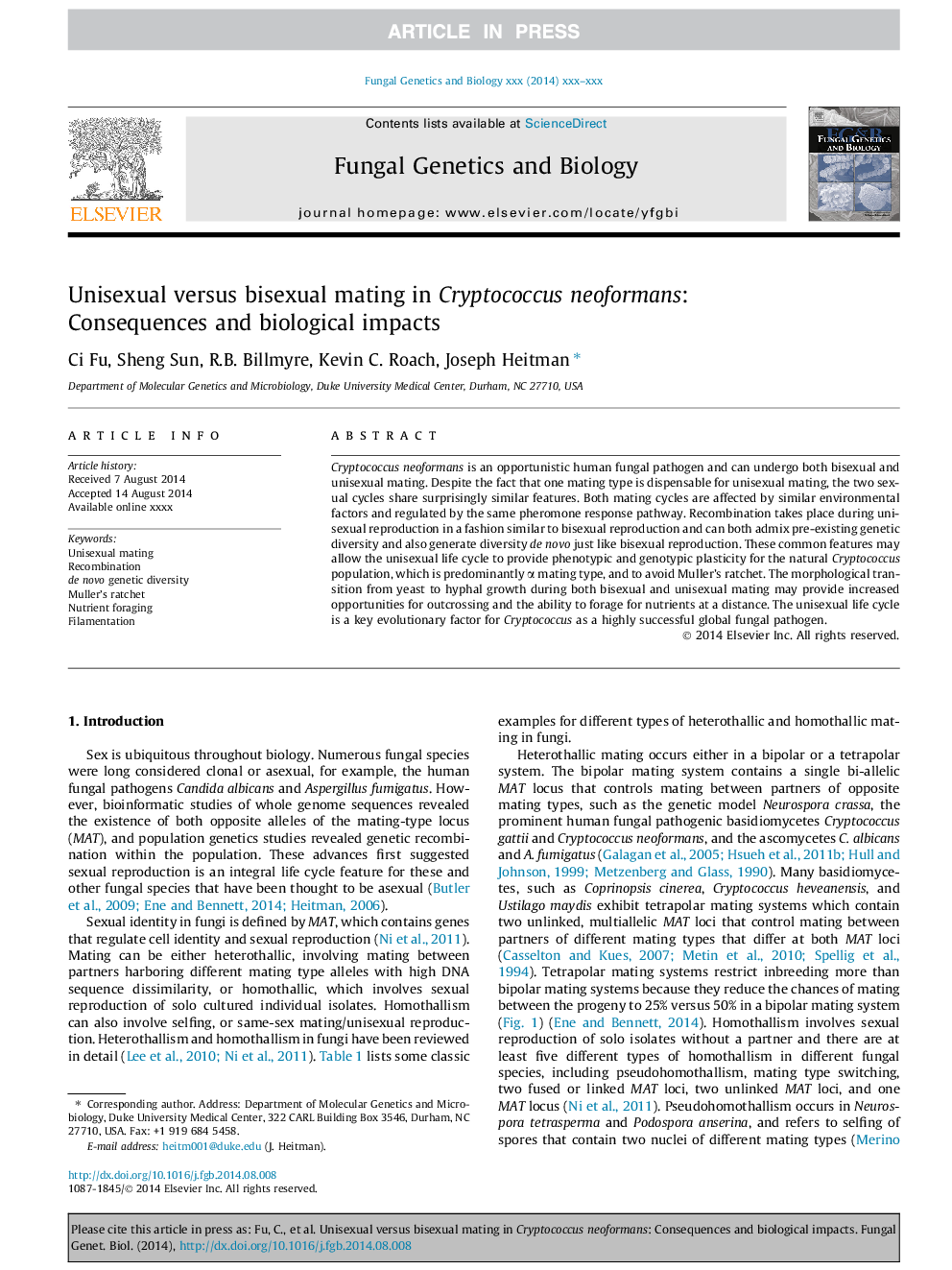| Article ID | Journal | Published Year | Pages | File Type |
|---|---|---|---|---|
| 8470771 | Fungal Genetics and Biology | 2015 | 11 Pages |
Abstract
Cryptococcus neoformans is an opportunistic human fungal pathogen and can undergo both bisexual and unisexual mating. Despite the fact that one mating type is dispensable for unisexual mating, the two sexual cycles share surprisingly similar features. Both mating cycles are affected by similar environmental factors and regulated by the same pheromone response pathway. Recombination takes place during unisexual reproduction in a fashion similar to bisexual reproduction and can both admix pre-existing genetic diversity and also generate diversity de novo just like bisexual reproduction. These common features may allow the unisexual life cycle to provide phenotypic and genotypic plasticity for the natural Cryptococcus population, which is predominantly α mating type, and to avoid Muller's ratchet. The morphological transition from yeast to hyphal growth during both bisexual and unisexual mating may provide increased opportunities for outcrossing and the ability to forage for nutrients at a distance. The unisexual life cycle is a key evolutionary factor for Cryptococcus as a highly successful global fungal pathogen.
Keywords
Related Topics
Life Sciences
Biochemistry, Genetics and Molecular Biology
Cell Biology
Authors
Ci Fu, Sheng Sun, R.B. Billmyre, Kevin C. Roach, Joseph Heitman,
